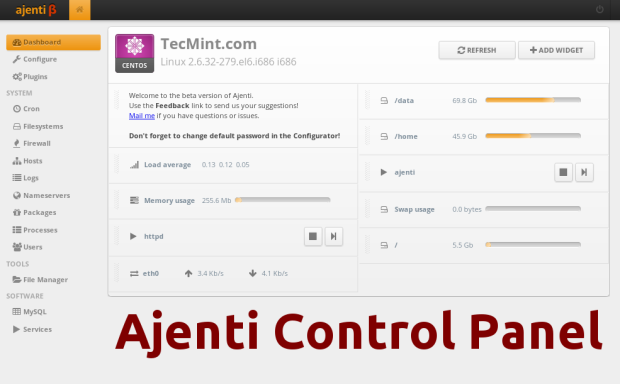Install Samba 4 On Debian Wheezy
An Active Directory Domain Controller is a vital tool for business network administrators. It allows the centralized management of all the computers in a business network, whether it’s local, nation or worldwide. You can add a user to the network with all there information, set their limits to features on a computer and they will be able to login to any computer on the business network. Active Directory Domain Controllers used to be a costly feature exculsive to Microsoft Windows Servers, but with the recent open source release of Samba 4.0 stable all of these features are now avaliable for free. This will allow small businesses and home users to utilize this Active Directory Domain Controllers on a limited budget.
Samba is a free software re-implementation of SMB/CIFS networking protocol providing file and print services for various Microsoft Windows clients and can integrate with a Windows Server domain, either as a Primary Domain Controller (PDC) or as a domain member. It can also be part of an Active. While looking for something to keep me busy on a quiet day I decided to work out how to get Debian 7 authenticating against our Active Directory domain. Install samba and winbind. Next we need to join the domain then enable this for login and then sort out the UID's so they match across servers.
Today we will walk you through the steps to setup your own Samba4 Active Directory Domain Controller on Debian 6.0 “aka Squeeze”. Tips Before we Begin • Before setting up your Samba4 domain controller you will want to remove any older versions of Samba 3.x to prevent interference with Samba4, unless you plan on migrating an old NT style Samba3 domain controller to Samba4. ***If this is the case, this tutorial is not for you*** • If you are starting with a fresh install make sure to enable xattr on any partition that Samba will be running on or accessing. This will be addressed later if you have a currently running install. • Resolv.conf is often a source if issues as it typically gets overwritten automatically.

Debian “wheezy” Release Information. Debian 7.11 was released June 4th, 2016. Debian 7.0 was initially released on May 4th. To obtain and install Debian.
If you run into issues down the road make sure that this file hasn’t changed. • If you are new to Linux tutorials commands that are typed into the command prompt “aka Bash” will appear in a grey box and will start with “$ “. You can omit the “$” sign and just type that command.
See the example below: $ echo “This is an example of a command to type at the Bash prompt” • If the grey box doesn’t contain the “$ ” then apply the contents as described in that step of the process. Installing Debian 6.0 If already have a working install of debian 6.0 then you may skip this section. Installing Dependancies 1) Install Samba4 dependencies and utilities required for this tutorial with the following command. $ apt-get install build-essential libacl1-dev libattr1-dev libblkid-dev libgnutls-dev libreadline-dev python-dev python-dnspython gdb pkg-config libpopt-dev libldap2-dev dnsutils libbsd-dev attr krb5-user docbook-xsl libcups2-dev git acl nano 2) The krb5-user package will ask for the following questions, highlighted in bold text.
We have included the proper responses in the example below. Default Realm: test.local Default Realm: 127.0.0.1 Administrative Server: 127.0.0.1 FSTAB File Setup Now that all dependencies for Samba4 are installed we will now configure the /etc/fstab file. Warning: If you are not farmiliar with the contents of this file read your distrobutions manual.
Edit at your own risk!!! 1) Open the /etc/fstab file in your preferred text editor. For this example we will use nano. $ nano /etc/fstab 2) Within the fstab file you will find your hard drive partition configuration.
Add the following parameters if they aren’t present: user_xattr, acl and barrier=1. View the example below. UUID=db6f8346-60ca-47b4-8ab2-046337abd834 / ext4 user_xattr,acl,barrier=1,errors=remount-ro 0 1 3) You must apply these setting to all partitions that Samba4 will access and remount your partition with the following command. $ mount -a Download Samba4 We will download the latest version of Samba4 via a program called git. The following command will download the latest stable version. $ git clone -b v4-0-stable git://git.samba.org/samba.git samba4 Compile and Install Samba4 Compile and install Samba4 with the following commands.
$./configure –enable-debug –enable-selftest $ make $ make install Provision Samba4 1) Provisioning the Samba4 Domain Controller creates the configuration files and the Active Directory database. Use the following command to start the process. Gowin Deluxe 2011 Serial. Hack Cisco Vpn Group Password Decoder here. $ /usr/local/samba/bin/samba-tool domain provision 2) The provision command will ask you for some information about your network.
Use the following example as a guideline, but modify the info as needed for your network.